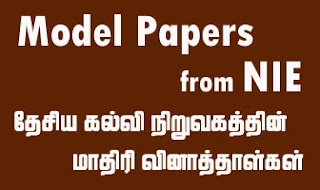What is Photosynthesis?
Photosynthesis, the process by which green plants and certain other organisms transform light energy into chemical energy. During photosynthesis in green plants, light energy is captured and used to convert water, carbon dioxide, and minerals into oxygen and energy-rich organic compounds.
Photosynthesis
In 1779, a scientist observed that in the presence of light plants give off bubbles from their green parts while, in the shade, the bubbles eventually stop. He identified the gas as oxygen. He also observed that, in the dark, plants give off carbon dioxide. This man was Jan Ingenhousz and this is how he became the first man to discover the process of photosynthesis.
You may already know that ‘photos’ is a Greek word meaning ‘light’ and ‘synthesis’ is another Greek word meaning, ‘putting together.’ However, what is photosynthesis and why is it important?
This is the process of making glucose, which is the energy source for most cell. It makes this from sunlight energy, water and carbon dioxide. Only plant cells can do this, and the special organelle in the plant cells that can do through this process is called a chloroplast. Photosynthesis goes through two stages.
Stage 1: light-dependent reaction (this reaction depends on the presence of light; it cannot happen in the dark):
This starts when photons from sunlight strike the leaf, excite the chlorophyll (the light absorbing pigment that drives photosynthesis) and activate electrons. During this process, water is split into oxygen and hydrogen ions. This is where the oxygen generated during photosynthesis comes from. The activated electrons then go through a series of electron carriers, also referred to as the electron transport chain, and in the process leads to the accumulation of the hydrogen ions inside the thylakoid membrane. The thylakoid membranes are the disc-like structures in the chloroplast that contain chlorophyll, generating a proton gradient. As the protons go down their concentration gradient through the ATP synthase, ADP and P come together to form ATP. The Adenosine tri phosphate or the ATP is an energy molecule that cells exchange like currency to release energy. The electrons going through the electron transport chain eventually end up combining with NADP+ to form NADPH, another energy-rich molecule that will be used later.
Thus, the result of the light reaction is the production of oxygen (released from the leaves), and ATP and NADPH, which will be needed for the later steps.
The main difference between ATP and NADPH is the amount of energy molecules they release.
Stage 2: Light-independent or dark reaction (this reaction can proceed in the absence of light, but calling it a dark reaction might be misleading as it doesn’t happen only in the dark—it can just as well happen in the light).
This reaction uses the energy from light reaction to convert carbon dioxide into glucose. This might sound simple, but in fact the conversion of carbon dioxide to glucose proceeds through a series of reactions that start with 3-ribulose bisphosphate (RuBP) and eventually end up with the same molecule, producing glucose in the process. Because these series of reactions start and end with the same molecule, they are referred to as a cycle, specifically the Calvin cycle. The enzyme rubisco (RuBP carboxylase) is a very important component of this cycle. The overall, final photosynthesis reaction looks like this:
6CO2 + 6H2O (+ light energy) → C6H12O6 + 6O2
Comment below to let us know if you would like us to cover the Calvin cycle in an upcoming lecture.
As long as a plant remains green, it can benefit our environment in many ways and also transfers the energy in us when we eat it.
-------------------------------------------
இந்த பதிவுகள் உங்களுக்கு பயனுள்ளதாக அமைந்தால் உங்களுடைய நண்பர்கள் வட்டத்திலும் பகிர்ந்து கொள்வதற்கு தவறாதீர் !
If you have some problem with this post you can add a comment below, or you can contact us on email (focuslankaATgmailDOTcom). Share this resource with your friends !
Tags:- Science, Lanka Education, Exams, Learn Easy. lkedu
Tags:- Science, Lanka Education, Exams, Learn Easy. lkedu









No comments